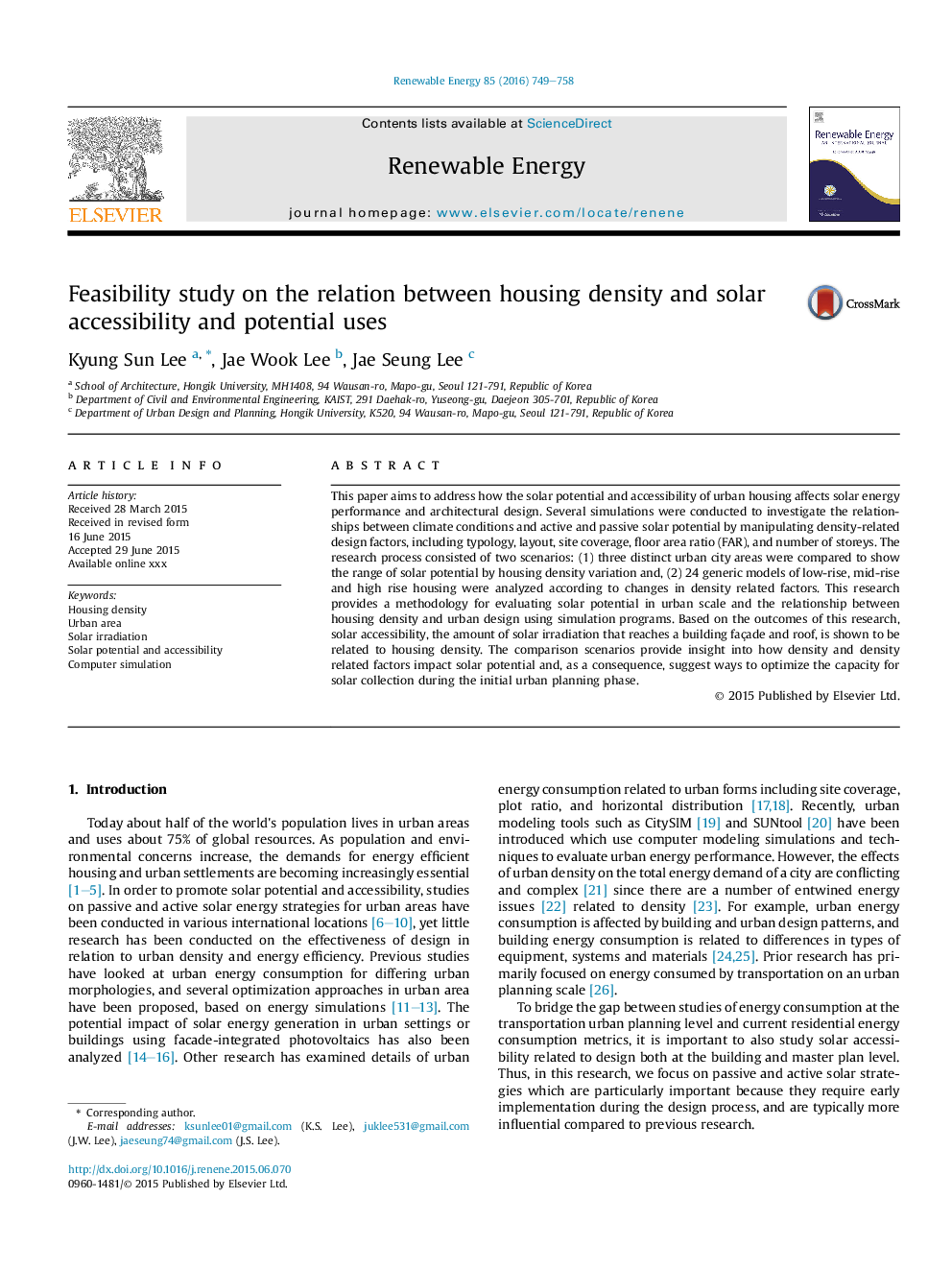| Article ID | Journal | Published Year | Pages | File Type |
|---|---|---|---|---|
| 6766849 | Renewable Energy | 2016 | 10 Pages |
Abstract
This paper aims to address how the solar potential and accessibility of urban housing affects solar energy performance and architectural design. Several simulations were conducted to investigate the relationships between climate conditions and active and passive solar potential by manipulating density-related design factors, including typology, layout, site coverage, floor area ratio (FAR), and number of storeys. The research process consisted of two scenarios: (1) three distinct urban city areas were compared to show the range of solar potential by housing density variation and, (2) 24 generic models of low-rise, mid-rise and high rise housing were analyzed according to changes in density related factors. This research provides a methodology for evaluating solar potential in urban scale and the relationship between housing density and urban design using simulation programs. Based on the outcomes of this research, solar accessibility, the amount of solar irradiation that reaches a building façade and roof, is shown to be related to housing density. The comparison scenarios provide insight into how density and density related factors impact solar potential and, as a consequence, suggest ways to optimize the capacity for solar collection during the initial urban planning phase.
Related Topics
Physical Sciences and Engineering
Energy
Renewable Energy, Sustainability and the Environment
Authors
Kyung Sun Lee, Jae Wook Lee, Jae Seung Lee,
